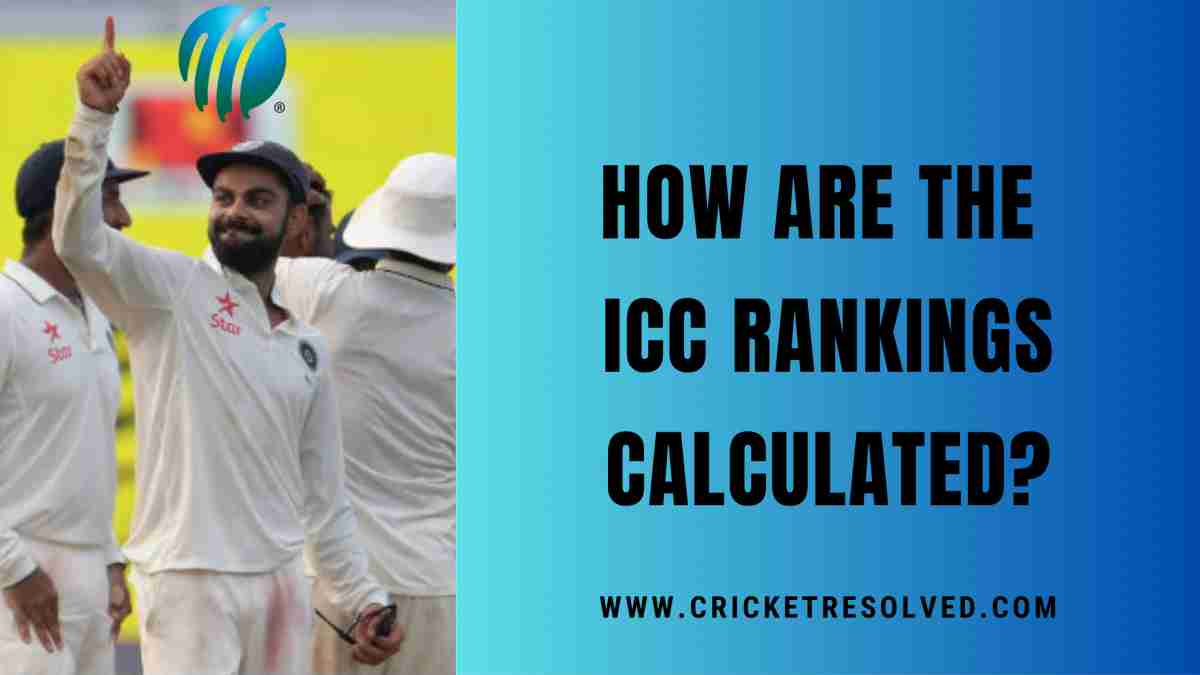
When we see social media, there are cricket fan wars, debates, and discussions among the audiences/fans and most of it is related to the rankings of their favourite players. They will be eager to put forth their views based on the standings.
We all know that cricket is a team sport where the players or a team’s progress over a significant period is estimated by a metric known as the ICC Rankings. The International Cricket Council (ICC) releases and updates the player’s rankings across the formats of the game on a weekly basis whenever there is an international game taking place. So how and on what basis does the ICC calculate the rankings of the players and teams?
The ICC Player and Team Rankings Explained
The MRF Tyres ICC rankings is the place where the international cricket teams and players are ranked. This is done based on the point system that is carried out by a series of calculations and on the moving averages.
Using this, the players are rated on a scale of 0-1000 points, and if a player is improving his performance from the past, his/her ratings will increase, and when the player’s performance declines from the past, the rating points will start to decrease.
The value of such performances by a player within a match is calculated using a pre-programmed algorithm based on the match situation. We have to note that the player ranking methods differ with respect to the different formats of the game, but the calculations are entirely based on the algorithm and there is no human intervention.
For the individual rankings, to make it simple, in a low-scoring game, if a batter’s score percentage is more, then his rating points will improve, and the points will decrease if the batter returns with a low score in a high-scoring affair.
Also Read: Net Run Rate Calculation in Cricket – Explained
How are ICC Team Rankings Calculated?
This rating is put into effect by dividing the points accumulated by the match/series total, with the answer given to the nearest whole number. It is comparable to the batting average of a batsman, but with points instead of total runs scored and a match/series total instead of the number of times dismissed.
The ICC rankings are applicable for both Men’s and Women’s cricket. In men’s cricket, the calculations are made for all 3 formats of the game- Tests, ODIs, and T20Is but for women’s cricket, it only covers the WODI and WT20I as the Women’s Test cricket is played very far and few in between.
David Kendix developed the rating method to rank the men’s teams playing across Test, One Day Internationals, and T20 Internationals, as well as the Women’s T20 International (WT20I) and One Day International (WODI) teams.
Men’s ICC Rankings
Test: There are currently 12 teams playing Test cricket, and as per the latest ICC rankings for men, 10 teams are given ratings while Afghanistan and Ireland, who also play Test cricket, are excluded. This is because they have not played the minimum required matches to fulfil the criteria, and once they start playing regular Test cricket, the teams will be part of the rankings.
ODI: According to the latest ICC release, there are 20 teams that are part of this ranking system. The criteria is that the teams should have an ODI status, and the games they play should contain the ODI status. For instance, if a member side with ODI status plays with a team that does not have ODI status, then the match won’t count for the rankings.
T20I: As of date, 85 teams are ranked by the ICC in the T20 rankings out of the 105 nations that have T20I status. The remaining teams must not have played enough games in the given time period to be included in the rating system.
Women’s ICC Rankings
WTest: As mentioned earlier, Women’s Test cricket is played at scarcity, and we don’t have enough games to make a rating system yet.
WODI: As per the latest ICC ranking for women’s cricket, there are currently 13 teams that are part of the rating system, and with women’s cricket expanding at a rapid pace, we are bound to see more sides playing this format of the game.
WT20I: Like men’s cricket, the ICC has granted T20I status to all its women’s cricket member sides, and as of now, 60 nations find themselves as part of the ICC Women’s T20I cricket rankings.
If the game of cricket itself is a major point of discussion on various platforms, the ICC rankings are a tool to add fuel to the already burning fire. But enough said, the rating system is the best way to calculate where the player stands among his/her peers and also how he/she can be compared to his predecessor.
When or How Often Does the ICC Release the Rankings?
The ICC rankings are frequently updated on their official portal. For men’s cricket, the cricket’s apex body releases the rankings on every Wednesday, provided any game has taken place in that given week. For women’s cricket too, the ICC follows the same procedure in updating the rankings.
When it comes to the team rankings, the ICC does provide any changes in the ratings regularly as and when a bilateral series or a multi-national tournament gets completed.
Why do Player’s Rankings and Ratings Change? How Does the ICC Calculate That?
As mentioned, the player’s rankings and ratings are calculated on the basis of pre-programmed algorithms. Normally, a player’s recent performance plays a major role in them gaining or losing rating points, thus having an effect on the rankings as well.
If a player’s average in a given series is higher than his/ her career average, then the rating points are bound to increase. Otherwise, there will be a reduction. Likewise, if a player misses matches, it automatically reduces their rating points. Similarly, for a bowler, the lower the average, the better the ratings.
Read Next: What makes Test cricket tick even after 100 years of existence?








4 thoughts on “How are the ICC Rankings Calculated?”